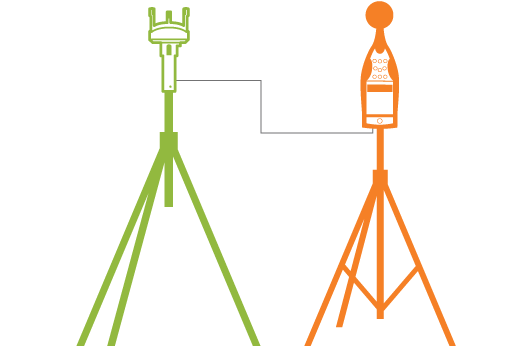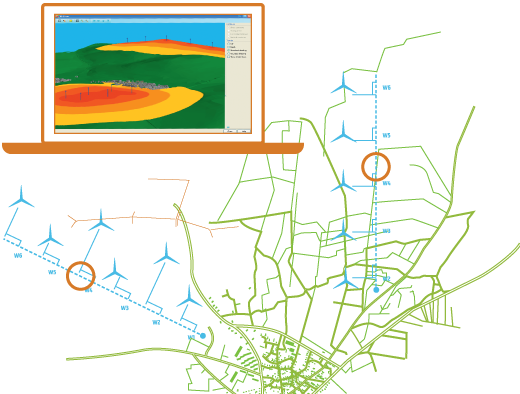
Urban Noise Pollution
Because urban noise levels directly affects quality of life, noise pollution in cities has become a major concern for urban planners, municipal officials, and politicians alike.
The soundscape in a town or city has a huge effect on the quality of life there. The noise from traffic and transportation can affect our physical and psychological health.
This is why urban noise management and mapping are major concerns for urban planners, municipal officials, and politicians alike. And since reducing noise levels through traffic regulation, low-noise road surfaces or noise barriers is very expensive, it is best to avoid such measures where possible.
In short, preventing and reducing noise before it occurs, through noise-action plans, is the best way to minimize noise pollution from sources including wind farms and new roads.
Urban noise assessment
Assessment of urban noise from commercial properties or road traffic is the first practical step in urban noise management. The next stage is noise mapping, requiring the systematic charting of individual noise-source activity. Often, a large number of different sources contribute, so the impact of each specific noise source must be evaluated. These are fed into a calculation engine to create a range of noise metrics.
It is necessary to model the propagation of the noise including reflections from and attenuation of buildings and structures. These all greatly affect the noise levels experienced on the ground. Since this requires a large amount of information about the mapped area, it’s important that noise-capturing systems can interface with geographic information systems (GIS) and other management systems.
Environmental noise assessment
Environmental noise assessment is generally about evaluating the impact of one specific noise source, for example, the noise from a production plant. This is not easy as often a number of different sources contribute to the ambient noise at the measurement position.
For years, acousticians have attempted to quantify this to enable objective assessment of noise nuisances and implement acceptable noise limits. With large numbers of people, reactions tend to be distributed around a mean, and the rating level (or Lr) was developed to put a numerical value on a noise to quantify its annoyance in relation to the general population.
The rating level, defined in ISO 1996-1:2016, is a single value for evaluating the potential nuisance factor of noise. It takes into account type of source, time of day, nature of the noise (impulsive and pure tones present) and the overall level of noise. It compares measured levels with noise limits that usually depend on the use of the property under investigation. Almost all countries use the rating Level when assessing industrial noise.
System suggestion
Environmental noise assessment system
For a point solution, B&K 2245 Sound Level Meter with Enviro Noise Partner provides environmental noise surveys to ensure regulations compliance and investigate noise complaints.
For a broader spectrum of logging and measurement possibilities, Measurement Partner Suite BZ-5503 provides versatile tools for analyzing measured data from Brüel & Kjær Types 2250, 2250–L and 2270 sound level meters, and provides a complete solution for the calculation of rating levels according to selected national standards.
Noise mapping and prediction are essential for assessing noise levels over a wide area and for predicting the variations in noise environment due to changes in use. Noise prediction is widely used throughout the planning of developments, from building of large industrial premises and establishment of wind farms to small changes to structures, such as the addition of air conditioning or road widening. Prediction lets you assess and communicate changes to the noise impact, and forms a key part of an environmental impact study.
Noise mapping uses similar modelling techniques to assess noise levels over a wide area, which cannot be achieved cost effectively with individual noise monitoring terminals. The European Commission’s Environmental Noise Directive (END 2002/49/EC) required the creation of noise maps, followed by noise action plans for all agglomerations, major roads, railways and airports by June 30, 2012. Mapping needs to be repeated every five years. There are similar programmes in other countries outside Europe.
Our noise mapping and prediction tools provide both usability and comprehensive modelling for a wide range of applications and national standards.
System suggestion
Brüel & Kjær noise calculation, mapping and prediction tools include Predictor-LimA Type 7810, a software bundle for environmental noise projects that integrates the intuitive Predictor™ and the flexible LimA™ software into one powerful, state-of-the-art package – providing an efficient solution for any noise mapping project, including noise impact assessments.
Predictor and LimA can be used as stand-alone applications or as one integrated application by using the LimA-Link option in Predictor. Both use the same fast LimA calculation cores, so there is no difference in calculation speed or calculation capacity.
Related information

Iscriviti alla nostra Newsletter e ricevi le informazioni più recenti dal mondo del suoni e delle vibrazioni







